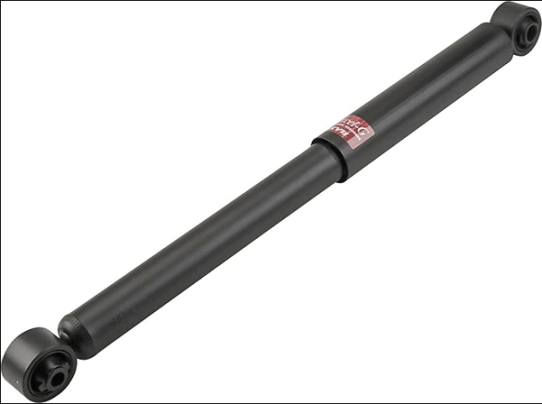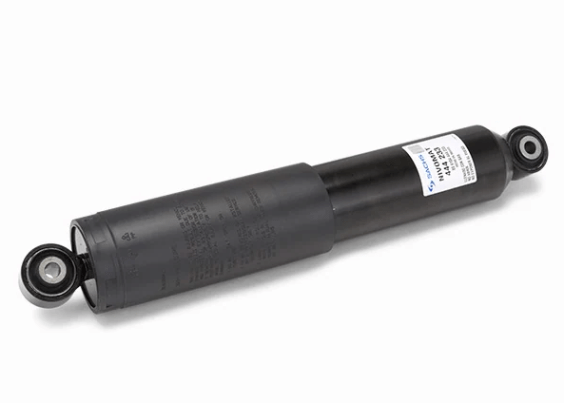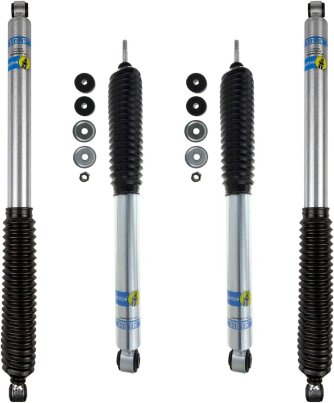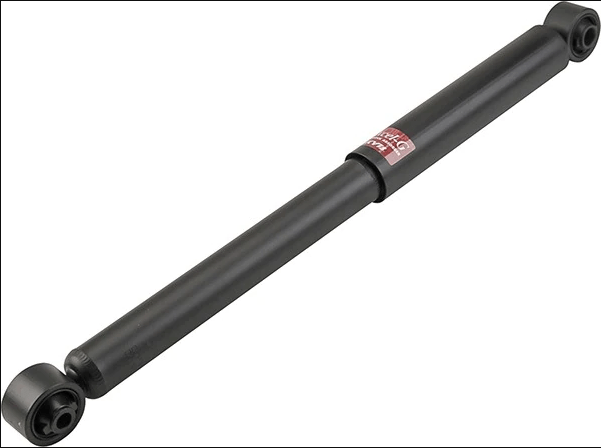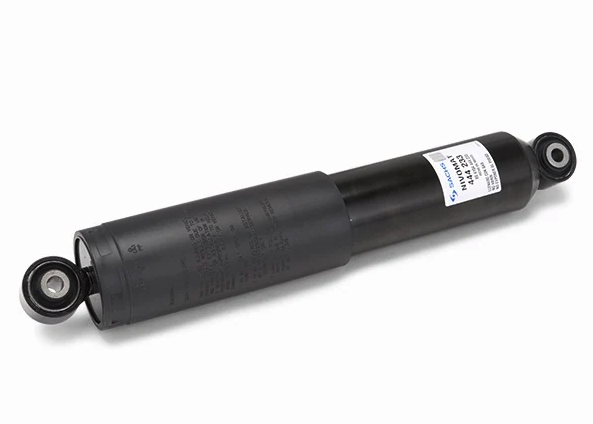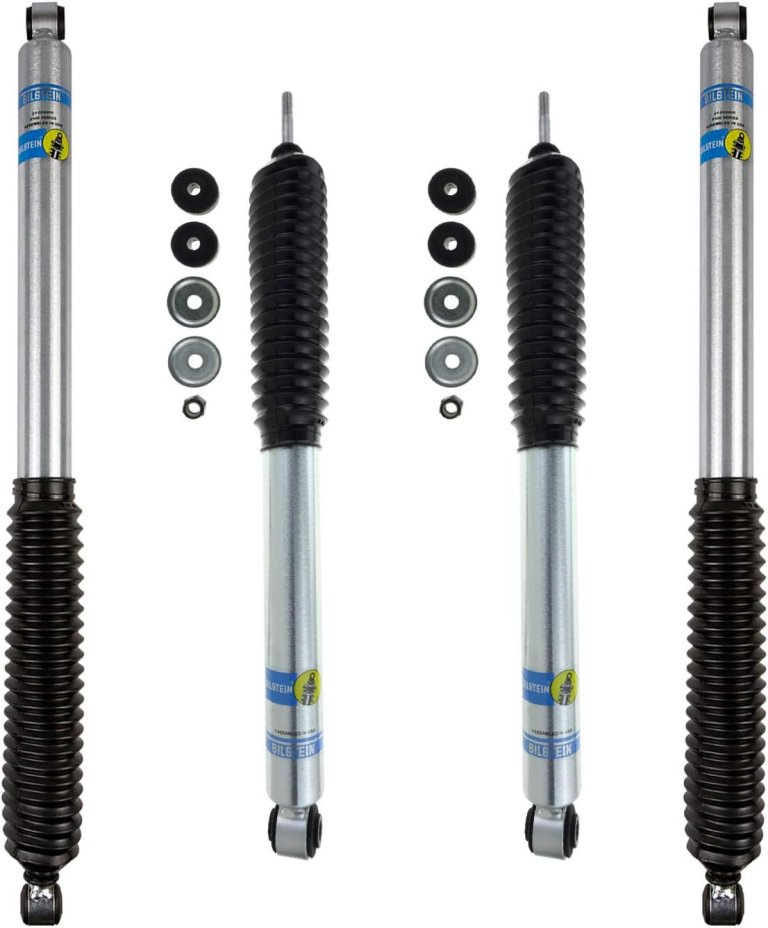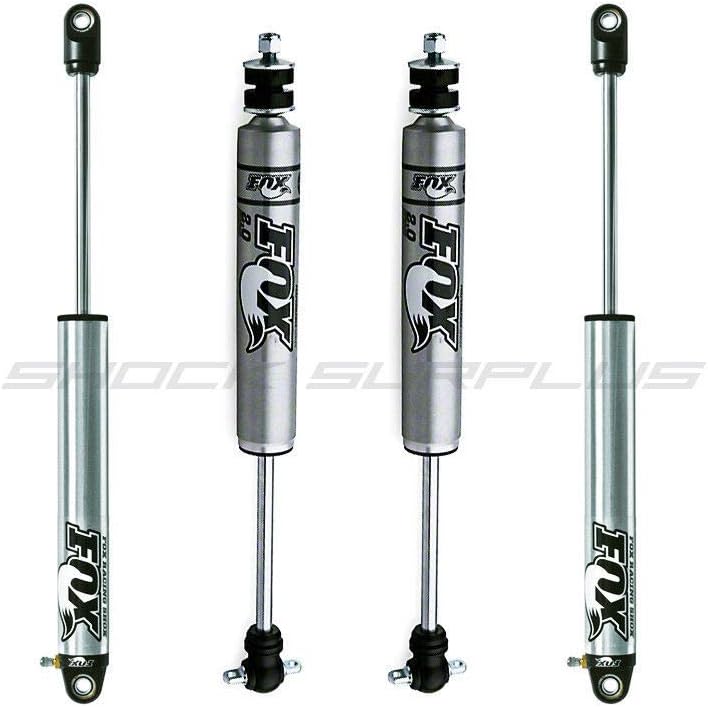We may earn revenue from the products available on this page and participate in affiliate programs. Learn more ›
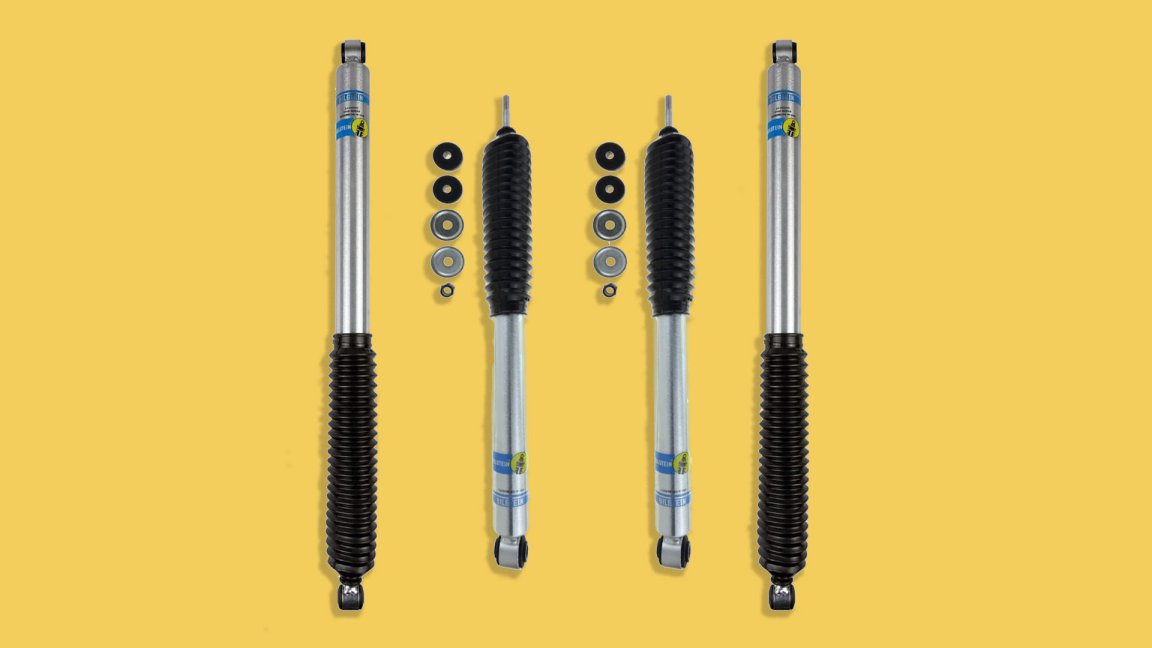
While cars and trucks certainly have made strides in design and engineering, the shock absorber is one part that really hasn’t changed too much over the years. Many production cars still rely on them, and they’re still a major part of a vehicle’s ride quality and performance. They fail from time to time, however. Whether that means they fail to function or fail to perform as needed depends on your situation. As with any part that fails, you will eventually need replacements, and we’re here to help you track them down. We’ll show you some of our top picks and set you up with a buying guide. These options should serve as representations of what to consider, regardless of specific applications.
Summary List
- Best Overall: KYB GR-2 Shocks
- Best Value: Sachs Replacement Shocks
- Honorable Mention: Bilstein Monotube Gas Shock Set
- Best Off-Road: Fox Performance Series IFP Shocks
- Best for Classics: KYB Gas-a-Just Gas Shock
How We Selected the Best Shock Absorbers
There are a lot of great shock absorber brands on the market, but when it came time to choose the best, we made sure to try and stick to the brands we know work for most people or are the most popular. We have experience with every brand we’ve suggested. Ride quality and reliability aside, we also made sure to consider some custom applications to come up with a list that we feel covers the widest market.
Our product selections, rankings, and awards for this story are based on research. While we haven’t conducted real-world testing on all of these products yet, we’ve looked at consumer testimonials and data, tutorials, and general discussions on social media and in forums. We also consider price and specification in the context of the segment. And, of course, we rely on our institutional knowledge of the automotive landscape to weed out weak products.
Best Shock Absorbers: Reviews & Recommendations
Best Overall: KYB GR-2 Shocks
The KYB GR-2 is a twin-tube low pressure gas shock that will give a noticeable improvement in ride and handling without being harsh. The pressurization helps prevent aeration of the oil which would compromise performance under hard use.
I’ve used KYB shocks and struts on a few of my own cars in the past and I’ve always been impressed with the ride and handling mix. The damping rates are slightly stiffer than factory on most applications, but driving enthusiasts will certainly appreciate the extra body control. KYB shocks are covered by a lifetime warranty to the original purchaser, so keep that receipt, just in case you need it years down the road.
Best Value: Sachs Replacement Shocks
If you’ve spent time under European cars, you’ve likely seen a lot of Sachs shocks and struts. As part of the ZF family of companies, it’s the largest manufacturer of OE dampers in the world. These particular units are designed to be direct replacements for your factory shocks, so while you will see an improvement compared to the worn out shocks they are replacing, you probably won’t see much of an improvement over stock. But, if you like your car from the factory, why change?
These shocks will be easy to fit and will give years of reliable service. You can probably find something cheaper at the local parts store, but it isn’t a bargain if you’re unhappy with your car’s performance, no matter how much money you save.
Honorable Mention: Bilstein Monotube Gas Shock Set
These shocks cover the bases for many vehicle owners who need a suspension update. While these particular shocks are designed for F-Series trucks, Bilstein is one of our favorite manufacturers. And the 5100 series shock is a step up for many vehicle owners as these shocks offer improvements in performance, comfort, and virtually anything else you want from a shock absorber. These are some of the best shocks on the market, which is why you’ll find the name in many corners of the industry.
This particular option replaces all four shocks. But there’s no denying that quality comes at a high price. In addition, the shocks will make noticeable changes to ride characteristics, which is worth reading into before buying. Also, quality-control issues may occur.
Best Off-Road: Fox Performance Series IFP Shocks
Fox Performance is a line you can’t ignore for off-roading. The quality and performance vastly separates it from the competition. When you take your SUV or truck off the beaten path, the factory shocks are not the best option. Fox has made its name as the manufacturer of some of the best off-road shocks because of its ability to perform and due to the high-quality parts it uses.
This particular kit covers JK Wranglers with 1.5-3.5 inches of lift for all four corners. The improvements make this a solid option, and that’s especially true considering their ability to handle on and off-road conditions.
Best for Classics: KYB Gas-a-Just Gas Shock
KYB shocks are popular for older vehicles because they make major improvements to performance at a competitive price point. If you’re working on a classic car, moving to KYB shocks is worth the time and effort, and this particular set is a direct match for many popular classic GM models.
They’re much stiffer than what most of those cars came with, helping the vehicle stick to the road during launches and in corners, and they even help correct stance.
Our Verdict on the Best Shock Absorbers
We feel safe in saying that the KYB GR-2 Shocks is a good choice for most applications. However, something like the Sachs Replacement Shocks is great on a budget.
It’s all open to interpretation, though. Which shocks you use is dependent on your personal tastes, driving styles, and application.
What to Consider When Buying Shock Absorbers
Types of Shock Absorbers
There are three basic types of shock absorbers on the market. These can each be broken into their own subcategories to really help you hone in on the characteristics you need. Still, you will need to understand the general differences to ensure you’re in the right territory.
Traditional shock absorber
Traditional shock absorbers are the most basic offering, and they’re nothing more than a telescoping body with valving and hydraulic fluid to control damping. You’d find these on all four corners of older vehicles but are generally reserved for the rear of modern cars.
These shocks are the most affordable, but that doesn’t mean they’re all basic. They can feature monotube or twin-tube configurations, gas charging, external reservoirs, and even adjustable damping, making for massive improvements in control and ride quality.
Strut
Most modern cars use what’s known as a strut on the front end. In this type of suspension, the strut is a locating member that defines the movement of the wheel. Where a shock is only loaded in tension and compression, a strut experiences just about all imaginable loading during operation.
Struts are normally used in a coilover configuration, meaning the spring is located around the damper shaft. Obviously, cars like air-cooled 911s which used torsion bars in combination with a bare strut exist, but are relatively rare. In many modern cars, the strut also has mounting tabs for everything from anti-roll bar link ends, to brake hoses, wiring, and even brake ducting, so fitment can be extremely precise to individual option packages of year, make, model, trim.
Coilover
Technically speaking, any damper and spring combination that locates the spring around the damper is a coilover. In most cases, when someone says “coilover” they are refering to a threaded body coilover. The body of the damper, either a shock or strut, is threaded to allow either the body itself, or the spring perch, to be adjusted. This allows the ride-height of the car to be adjusted.
More often than not, coilovers are used to adjust the ride-height for aesthetic reasons. These were initially developed for racing so cars could be corner-balanced. Slight differences in ride height, side-to-side and front-to-back, allow the car’s weight to be shifted to change the handling characteristics.
Shock Absorber Key Features
The fact of the matter is that shock absorber selection is heavily influenced by application demands. These are application-specific parts, so unless you’re going all in on a custom build, you’ll need to replace the shocks with the same type of shock the factory used. Thankfully, that’s made simple with year/make/model searches. In most cases, the features of the shock are what you really need to pay attention to.
Hydraulic vs. Gas Charged
Shock absorbers are filled with hydraulic fluid. That works with the internal valving to slow the motion of a shock absorber. The two work together to determine ride quality. As a shock cycles, the fluid heats up, aeration occurs, and performance dwindles. A way to reduce the issue is by charging the shock with nitrogen.
Gas-charged shocks are essentially more stable but are generally associated with performance vehicles because they stiffen up the ride, while cushy hydraulics are more of a luxury thing. The fact is that most vehicles benefit from gas-charged shocks these days because of their resistance to diminishing ride quality.
Tube
You’ll find shocks declare that they’re either a twin-tube or monotube design. What does this mean? The way a shock works is you have a tube filled with hydraulic fluid and a piston controls the motion with internal valving that slides up and down in that tube. A monotube shock features a wider piston in a larger tube, while a twin-tube has a smaller piston in a smaller tube with a secondary tube filled with hydraulic fluid surrounding it.
The advantage of a twin-tube design is that it creates a softer ride as it’s a low-pressure system. The larger piston in a monotube stiffens things up, which improves performance. What is appropriate for your vehicle depends on what the factory calls for, but monotube shocks are generally better.
Valving
As we said before, the piston inside of the shock absorber features valving. The orientation of the valves determines how easily the piston can pass through the hydraulic fluid in either direction, which does impact overall performance and ride quality. For the most part, this isn’t something most vehicle owners need to worry about.
Manufacturers come up with a combination that is intended to suit their driving style, and keywords like comfort and performance are about as much as you need to know. However, shocks with adjustable valving do exist. They are a great option for those that really want to dial in the suspension of their vehicle. However, you should be careful before buying because you will need to spend a good amount of time messing with the adjustments to get them just right for your application.
Build Quality
If it seems too good to be true, it usually is. If a shock is absurdly cheap but features adjustable valving and uses all the flashy keywords, it should throw up some red flags. It might have the general design down, but they are bound to fail you in short order. Take the time to read into whatever it is you’re about to buy to make sure the shocks aren’t prone to springing leaks or breaking and that they do fit correctly.
Tips and Tricks
If you can nail down a year/make/model search and understand the basics of shock absorbers, you’re ready to nail down the perfect shocks for your car. We have a couple of tips to share with you before you get rolling.
Forums Are Your Friend
The right set of shock absorbers can make a major difference in overall ride quality. Keywords will get you in the right vicinity, but each manufacturer uses its own recipe, meaning you might not know exactly what to expect. A great way to get the information you need is through an online forum. Find a forum for your make and model, and see what others have to say about the shocks on their vehicle to help you get a better feel of what to go with.
Suspension and Steering Mods Need Matching Shocks
As you start changing things on your vehicle, different demands will be placed on the shock absorbers. For example, tightening up the steering demands something more responsive, while changing ride height changes how much travel is needed. As you start making these changes, keep shock absorbers in the back of your mind to ensure you pick the perfect match.
Don’t Forget the Springs
Springs and shocks go hand in hand. The spring supports the vehicle and keeps the body elevated, and the shock dampens the spring rate. If you’re looking to overhaul the characteristics of your suspension, you may need to address both to meet your end goal.
FAQs
We might not know exactly what’s bouncing around in your skull, but we can try and address it by answering some of the most frequently asked questions about shock absorbers.
Poor traction, excessive bouncing, vibrations, clunking, leaking oil, and poor ride quality are all symptoms of bad shock absorbers. If you’re unsure which is bad, you can try compressing your vehicle’s suspension at all four corners and keep an eye out for inconsistencies.
You can drive a vehicle with bad shock absorbers, but it’s not safe. A failed shock absorber is a compromise to performance and safety and causes stress on other vital components. Make sure your vehicle has good shocks on all four corners to prevent any issues.
Shock absorbers should last you about 40,000-50,000 miles under normal conditions. They can only take so much abuse, however. If you take a vehicle off-road, take corners fast, or often drive over pothole-littered roads, you can expect to replace them sooner.
Front and rear shock absorbers are not the same. They might offer the same performance characteristics but are usually different from one another. The length and mounting styles of the shocks can vary, and most modern vehicles feature a strut shock absorber on the front end.
